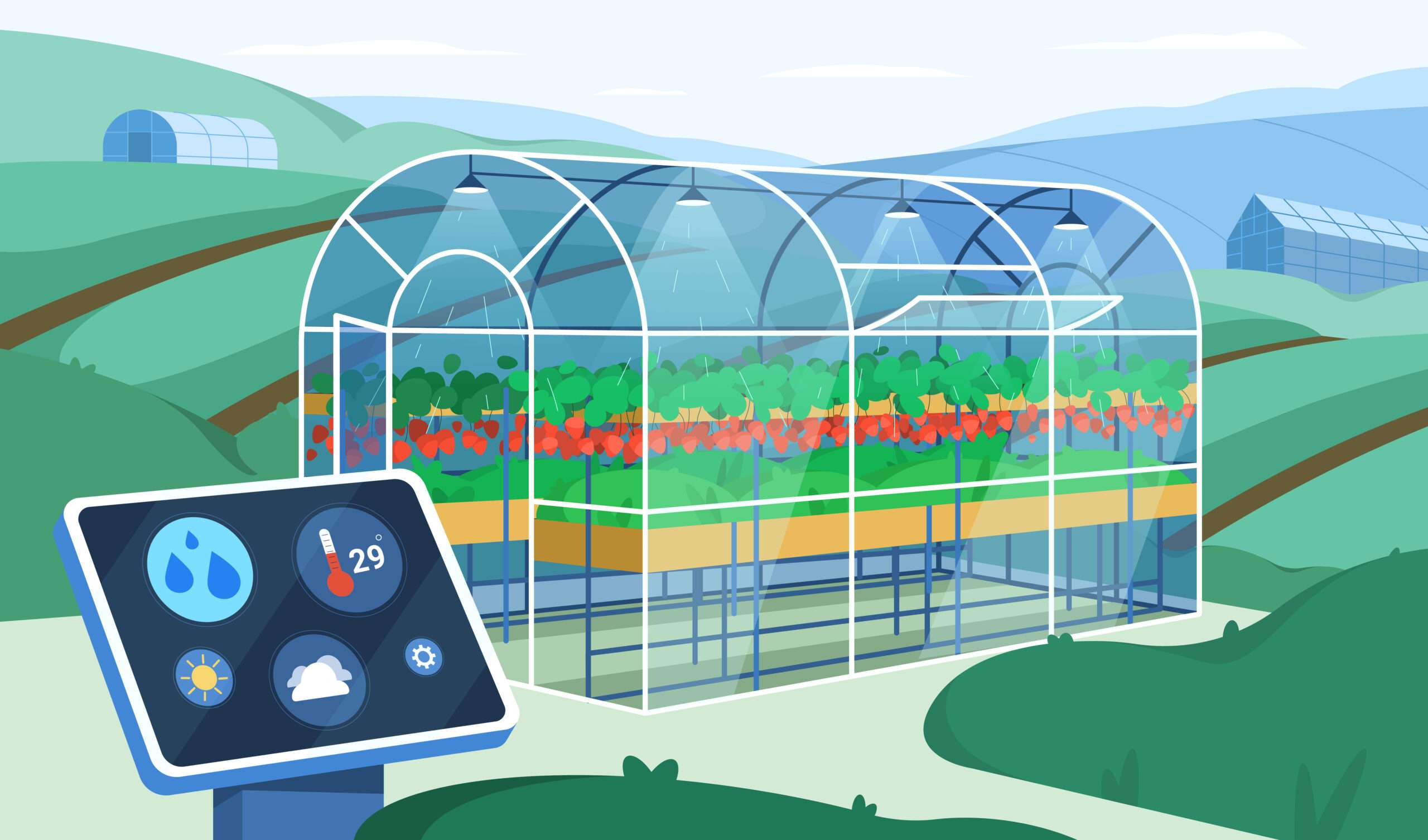The introduction of IoT in agriculture is not a new thing, however, it is not even trendy and accessible to the end-users.
In an era, where farming appears to be industrialized and tech-driven, there has been established many businesses that offer IoT-based gadgets for farming.
If you are someone, who still isn’t aware of these “IoT gadgets” and “smart agriculture system,” then this article is for you.
Here, we will cover all the possible and popular roles of IoT in agriculture.
Let’s get started!
Use of IoT in Agriculture
There are IoT-based smart agriculture products and devices designed and developed to monitor and automate crop fields using several sensors. This way, farmers and associated agribusinesses can easily monitor the field soil in real time even remotely.
Smart farming is an emerging and promising technology that, once considered the future of agribusiness, is now the present of agriculture.
If we have to define the role of IoT in agriculture simply, it will just be the Internet controlling tasks.
Smart agriculture practices use IoT technology to leverage the benefits of automation, connectivity, and real-time monitoring to make informed decisions and increase agricultural output.
The IoT devices can be embedded in soil, crops, machinery, and livestock to measure temperature, humidity, soil moisture, soil nutrient levels, and animal behaviors.
This collected data can be further analyzed to make decisions regarding irrigation, fertilization, disease prevention, and all other aspects of farm management. Farmers can avail of real-time data through their smartphones or tablets to monitor soil nutrient levels, moisture levels, and many more parameters to take future steps.
Top 5 Roles of IoT in Agriculture
Let’s now get to the main point and discuss some of the practical use cases and roles of IoT in agriculture.
1. Predictive Analytics
Farmers can get predictive insights by examining the data collected from the sensors, like near future weather patterns, soil moisture, and crop health. These insights will help them to make informed decisions related to irrigation, crop rotation, disease prevention, and resource allocation.
2. Greenhouse Automation
Installing IoT actuators and sensors in greenhouses is very beneficial for greenhouse automation. These IoT devices help monitor and control vital environmental factors such as temperature, light, and humidity. With the help of IoT, one can maintain optimal conditions, quicken plant growth, and increase greenhouse productivity.
3. Farm Management
Managing the entire agriculture farm is a big task and requires plenty of farmers. However, farm management can become stress-free and convenient with an IoT-based smart agriculture solution. It will allow farmers to amalgamate and manage all the data in a specific location. The IoT system can act as a centralized hub for recording crop yields, livestock records, and inventory levels for planning and resource optimization.
4. Livestock Tracking & Geofencing
Livestock management is an elementary part of agriculture, and with IoT-based livestock tracking devices, farm managers and farmers can monitor the behavior and grazing location of their livestock in real-time remotely.
5. Smart Pest Control
One more role of IoT in agriculture is pest control. The installed IoT devices in agriculture fields can detect pests through sensors and image recognition technology. Early pest detection will allow farmers to execute targeted pest control measures. Thus reducing crop damage and minimizing the use of excessive pesticides.
Benefits of Using IoT in Agriculture
From increasing agricultural efficiency to reducing waste and improving yield quality, the IoT can do all.
The use of IoT in agriculture practices gives farmers the power to tackle the challenges of feeding a growing population while at the same time ensuring sustainable farming.
- Some benefits of using IoT in agriculture are:
- Improved data collection for upgraded farming
- Optimized resource use for sustainable agriculture
- End-to-end control of the entire farming process
- Efficient crop management and reduction of waste.
Important Factors to Consider Before Getting a Smart Agriculture Solution
Now you know the role of IoT in agriculture and its benefits. However, before you integrate IoT and smart farming solutions into agricultural practices, you should be aware of some key points to consider before purchasing an IoT solution. These key points are:
1. Farm-distinct Needs
Before getting a solution, it is important to understand the specific needs of a farm like where this technology can bring improvement. Some of the farm-specific needs are irrigation management, crop monitoring, livestock tracking, and supply chain optimization.
2. Solution Scalability
Always choose a solution that can adapt to the ever-changing needs of a farm. As the crop grows, it diversifies, and the operations also start differing. To achieve scalability and flexibility through a solution, additional sensors or devices are embedded.
3. Regulatory/Environmental Factors
Take a look at important regulatory and environmental factors that might impact the implementation of agriculture solutions. Also, make sure to check compliance with the city laws and permits.
Note: You can also learn about the sensors in agriculture with the help of this article.
To Sum Up,
IoT-based agriculture practices are being promoted to achieve high-quality yields.
As an experienced IoT development service provider, we cover all aspects of IoT system development. At PsiBorg, we offer top-notch IoT-based agriculture systems customized to your business requirements.
With our extensive expertise in creating IoT-based agriculture solutions, we can offer you a solution that can scale your business.
Visit the website or get in touch with our expert team to gain more knowledge about how smart agriculture system works and why they should be used by agro-businesses.

As the editor of the blog, She curate insightful content that sparks curiosity and fosters learning. With a passion for storytelling and a keen eye for detail, she strive to bring diverse perspectives and engaging narratives to readers, ensuring every piece informs, inspires, and enriches.










